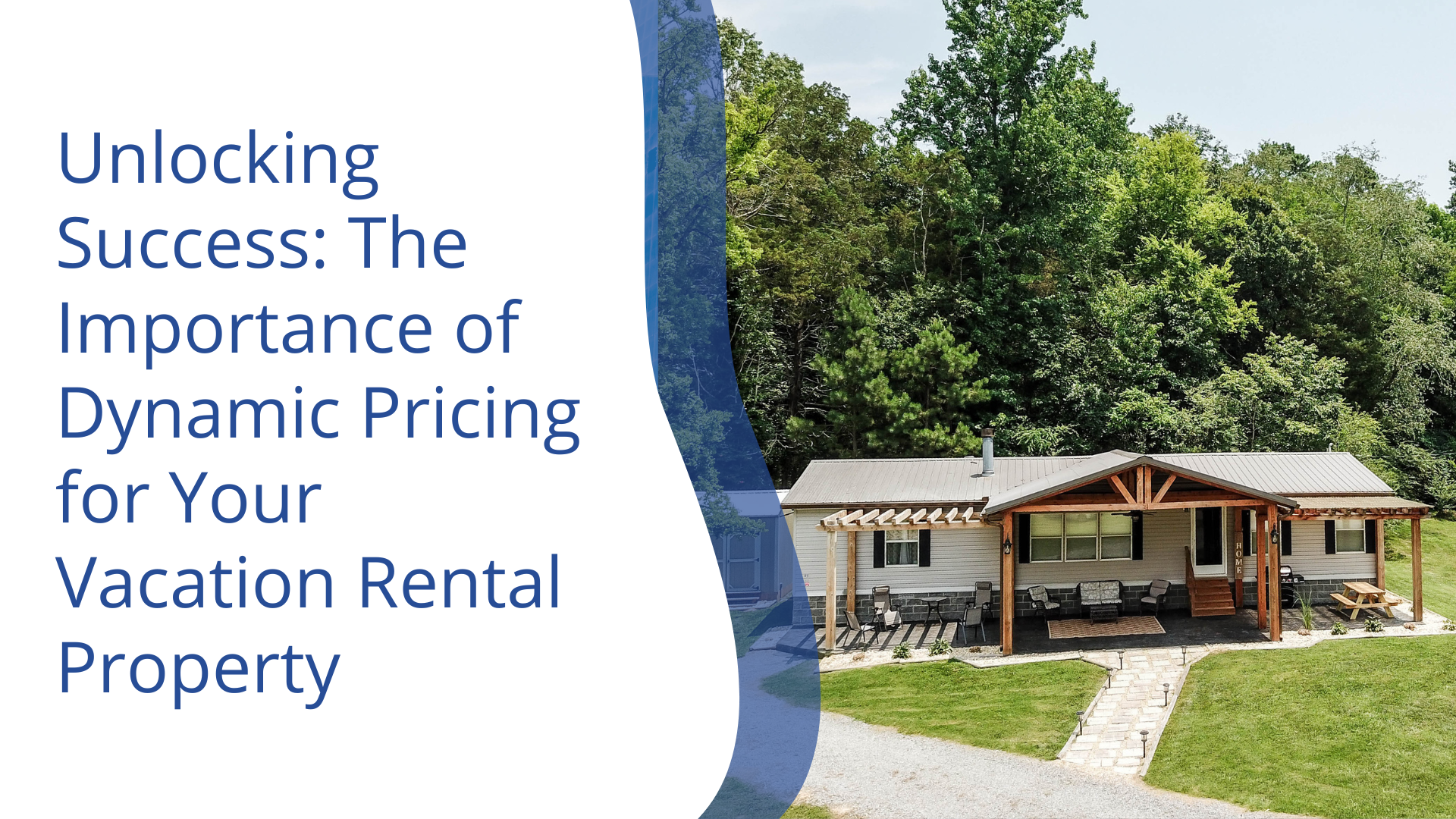
In the world of vacation rentals, the landscape is ever-evolving. To stand out amidst the competition and maximize your rental income, it’s essential to adopt strategies that keep your property in high demand. Dynamic pricing is a game-changing approach that can significantly impact your vacation rental’s success. In this blog post, we’ll delve into why dynamic pricing is crucial for your vacation rental property and how it can help you achieve your rental goals.
What is Dynamic Pricing? Dynamic pricing is a strategy where rental rates for your property fluctuate based on various factors, such as demand, seasonality, local events, and market trends. Rather than sticking to a static rate, dynamic pricing adjusts in real-time to reflect changes in the market, ensuring that your property is priced competitively and attractively at all times.
1. Maximizing Revenue At the heart of dynamic pricing is the goal of optimizing your rental income. By adjusting your rates to align with peak demand periods, holidays, and local events, you can capitalize on times when travelers are willing to pay more for accommodations. This approach can lead to a substantial increase in revenue over time.
2. Staying Competitive The vacation rental market is dynamic and competitive. Dynamic pricing allows you to stay competitive by adjusting your rates to match the current market conditions. If neighboring properties are experiencing high occupancy rates due to special events, your dynamic pricing strategy ensures you’re not missing out on potential bookings.
3. Reflecting Seasonal Trends Vacation rental demand can vary greatly throughout the year. From the bustling summer months to the serene off-season, dynamic pricing takes seasonal trends into account. It allows you to set higher rates during peak seasons and lower rates when demand naturally decreases, attracting guests even during quieter periods.
4. Real-Time Market Insights Dynamic pricing relies on real-time data and insights. By analyzing factors like local events, weather, travel trends, and competitor pricing, you can make informed decisions on adjusting your rates. This data-driven approach ensures that your pricing is always aligned with the current market conditions.
5. Balancing Supply and Demand When demand is high, prices rise; when demand decreases, prices lower. Dynamic pricing maintains a balance between supply and demand, helping you avoid overpricing during slow periods and underpricing during high-demand times.
6. Capturing Last-Minute Bookings Last-minute bookings are a common occurrence in the vacation rental industry. With dynamic pricing, you can offer attractive rates for vacant dates that are approaching quickly. This entices spontaneous travelers to book your property, reducing the risk of leaving your property unoccupied.
7. Personalization and Flexibility Dynamic pricing enables you to personalize your pricing strategy to your property’s unique attributes. Whether it’s a special amenity, a unique location, or distinct features, you can adjust your rates to reflect the value your property offers.
8. Adapting to Changing Conditions The world is constantly changing, and so is the travel landscape. Whether it’s unexpected events, economic shifts, or new travel trends, dynamic pricing allows you to adapt quickly and make necessary adjustments to your rates.
Conclusion In the fast-paced world of vacation rentals, static pricing can limit your property’s potential. Dynamic pricing opens the door to increased revenue, higher occupancy rates, and the ability to stay competitive in a thriving market. By leveraging real-time data and market insights, dynamic pricing ensures that your vacation rental property is always priced right, delivering optimal returns on your investment. Embrace the power of dynamic pricing and unlock the full potential of your vacation rental property in today’s ever-changing hospitality industry.

